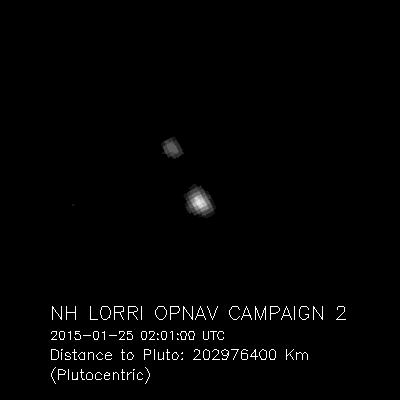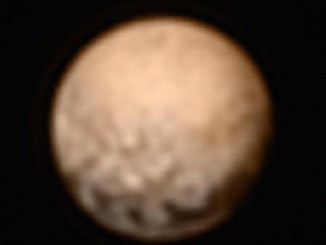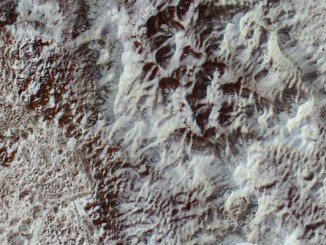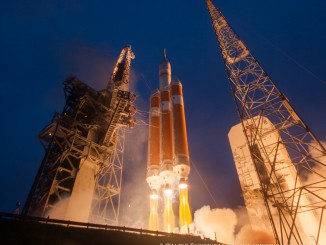
Less than six months from a historic close-up of Pluto, the New Horizons spacecraft has glimpsed its distant target at a range of 126 million miles, and better pictures are coming.
The images show Pluto and its moon Charon as pixelated figures. Pluto’s smaller satellites are too tiny for New Horizons to resolve at its current distance.
The spacecraft’s Long-Range Reconnaissance Imager captured the images Jan. 25 and Jan. 27, obtaining the first pictures of Pluto since New Horizons woke up from hibernation in December.
“Pluto is finally becoming more than just a pinpoint of light,” said Hal Weaver, New Horizons project scientist at the Johns Hopkins University Applied Physics Laboratory in Laurel, Maryland. “LORRI has now resolved Pluto, and the dwarf planet will continue to grow larger and larger in the images as New Horizons spacecraft hurtles toward its targets. The new LORRI images also demonstrate that the camera’s performance is unchanged since it was launched more than nine years ago.”
New Horizons will take hundreds more pictures of Pluto in the next few months, giving the mission’s navigators on Earth a fix on the mission’s target to plot course correction maneuvers ahead of the craft’s July 14 flyby.
The spacecraft is shooting for a narrow flyby corridor about 6,200 miles from Pluto, allowing New Horizons to get the best data on the dwarf planet’s structure, composition and terrain.
A minor rocket burn is scheduled for March 10 to refine the probe’s trajectory toward Pluto.
New Horizons is speeding toward Pluto at relative speed of about 31,000 mph, and the mission’s approach phase formally started Jan. 15 with the activation of the probe’s dust and plasma instruments to collect information on the environment at the outer frontier of the solar system.
“The U.S. has led the exploration of the planets and continues to do so with New Horizons,” said Curt Niebur, New Horizons program scientist at NASA Headquarters in Washington. “This mission will obtain images to map Pluto and its moons better than has ever been achieved by any previous planetary mission.”
Some time in May, officials expect New Horizons to start delivering images sharper than the best photos of Pluto ever taken by the Hubble Space Telescope.
The New Horizons team released the new images of Pluto on the birthday of Clyde Tombaugh, who discovered Pluto in 1930 and died in 1997.
“This is our birthday tribute to Professor Tombaugh and the Tombaugh family, in honor of his discovery and life achievements — which truly became a harbinger of 21st century planetary astronomy,” said Alan Stern, New Horizons principal investigator from the Southwest Research Institute in Boulder, Colorado. “These images of Pluto, clearly brighter and closer than those New Horizons took last July from twice as far away, represent our first steps at turning the pinpoint of light Clyde saw in the telescopes at Lowell Observatory 85 years ago, into a planet before the eyes of the world this summer.”
New Horizons carries some of Clyde Tombaugh’s ashes on the journey to Pluto.
“My dad would be thrilled with New Horizons,” said Clyde Tombaugh’s daughter Annette Tombaugh of Las Cruces, New Mexico, in a statement. “To actually see the planet that he had discovered, and find out more about it — to get to see the moons of Pluto– he would have been astounded. I’m sure it would have meant so much to him if he were still alive today.”
Follow Stephen Clark on Twitter: @StephenClark1.



